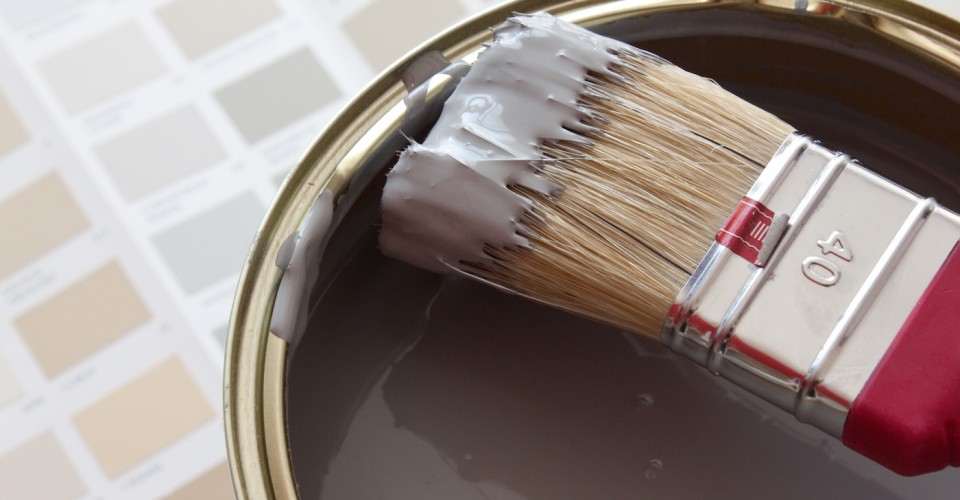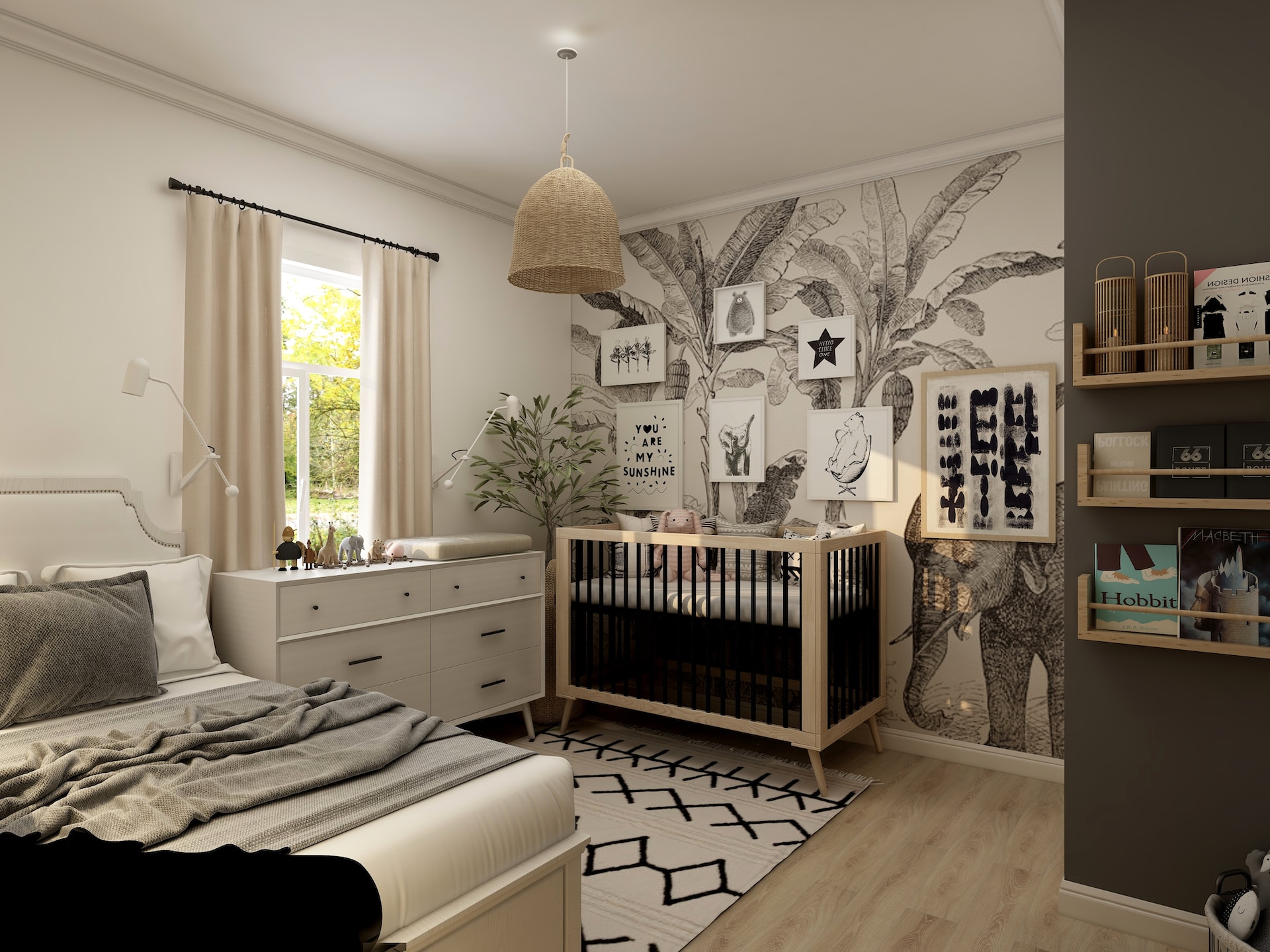Have you ever been stuck trying to find the perfect shade of white for your walls? Dying to try out a trendy color of paint but a little scared at what it might look like once the paint dries? We’ve all been there, frozen in front of the paint swatches, trying to decide if our bedroom would look better painted in Marsala or Radiant Orchid. Painting our walls or furniture (or floors) is one of those DIY weekend warrior projects that occasionally backfires. Some of this might be due to the fact that you picked the wrong color for your space. But it might also be because you weren’t quite ready for such a bold change in the first place.
Even with tons of inspiring rooms at our fingertips, selecting the right shade of paint color for your home can be overwhelming and frustrating. So I decided to chat with international color guru, Leatrice Eiseman, Executive Director of the Pantone Color Institute, head of the Eiseman Center for Color Information and Training, and author of nine books on color. She has won numerous awards and accolades for her work with color and is a style maker within the home furnishings industries as well as the fashion industry. As expected, her insights into how to use color, and how to live with color, were inspiring.

Leatrice Eiseman is the Executive Director of the Pantone Institute and author of nine books on color.
As an advocate for color, Ms. Eiseman believes that the right color can be successful in anyone’s home. “Color is emotional, you must listen to your emotions!” If we’re continually drawn to a particular color, like blue, it’s important to start experimenting with this color (along with its various shades and hues) to see how we respond to it inside the home. So before buying several gallons of paint and throwing it up on your walls, start experimenting with that color elsewhere, like with your textiles, décor or accessories. And even though painting is a rather low barrier to entry project (easy to DIY, not too expensive, supplies readily available at stores), it can be really frustrating to paint your home only to realize you hate the results.
Here are Ms. Eiseman’s expert tips for trying color trends at home and how to make color work for you.
How to use trendy colors in your home
“The important thing is to not reinvent yourself just because of a trend,” says Ms. Eiseman. In other words, trust your instincts with paint and color. You may be drawn to trendy color because you’ve seen it everywhere, but can you live with it? Instead of throwing that trendy color on your walls, why not experiment with easy-to-replace accents? Test out colors with your tabletop accessories, throw pillow covers or other decorative objects. This is a great (and inexpensive) way to see how you really respond to a color in your home.
How to choose the right color every time
“It’s a mistake to simply rely on paint swatches.” Although you might be tempted to begin your color search at the paint store, don’t. Just like experimenting with trendy colors, start by looking at your home and notice which colors you’re drawn to. If you’re simply trying to find the right shade of white, think about if you’re drawn to warm whites or cool whites. Trying to find the right neutral color? Again, narrow down your choices by looking at what you already love in your home – it might be cool greys or warm beiges.
When testing out colors, Ms. Eiseman recommends painting a board or small piece of drywall. Move this board around the room and look at it during various time of day. Take note of how the color works with different types of light; see how it works with your furnishings. Live with it so the whole family can get an emotional response to the color.
Colors are emotional
“Listen to your emotion!” Colors produce an emotional response, and depending upon our past experiences or memories, we may be attracted to (or repelled by) certain colors. It’s all about your response to a color. If a trend or color speaks to you, test it out.
Are you ready for a color change?
“Can you handle the change?” Before you rush out and paint all four walls, ask yourself how open you are to a change in color. If you don’t like your new color, it may be because you just weren’t ready for the change. It might not be the fault of the color.
Color in the home affects everyone
“You’re not the only one who has to be pleased.” You may notice yourself drawn to the same colors when shopping, or you might be experimenting with colors in your clothing or makeup. But remember that your whole family needs to live with these colors as well. In other words, just because you love to wear turquoise doesn’t mean you should paint your walls this color.
Sticking to safe colors
“Don’t retreat to neutrals!” If you love color, use it. Don’t be tempted to stick with neutrals just because you think it’s more appealing to a broader audience. If you’re planning on living in your home (and not immediately planning on moving) use the colors that you respond to best. When it comes to staging your home, remember that homes are an emotional buy. Color, pattern, texture and décor lend feeling and emotion to a space.
Color is influenced by your location and light
When she moved from sunny Los Angeles, with its southwestern-inspired colors, to the grey skies of the Pacific Northwest, some hues had to change. “To take those same colors and move them up here wouldn’t make sense. I still use the colors I love, I just use the right shade for this light.” For example, the lemon yellow that looks amazing in bright sun of Miami may not look so hot in Seattle. But a muted version of yellow might be perfect. Don’t give up on your favorite colors; just be open to using a different hue or shade instead.
A great color resource is Ms. Eiseman’s book, Colors For Your Every Mood. It’s an excellent education about color without being overwhelming or too academic. It’s a great practical read for those searching to learn a bit more about how to use color in their life with ease.
Working with a color consultant
“Hiring a color consultant is worth it.” If you’re really stuck on colors and are trying to select a palette for several rooms (or the whole house) it is worthwhile hiring a color consultant. Their primary goal is to find the right palette for your family and take into account the furnishings as well as the overall light. A color consultant can help you save loads of time trying to select the right shade of color for your home, and save you from having to repaint your mistakes. As with any pro, you’ll want to first make sure your prospective color consultant has a portfolio to look at as well as the necessary business paperwork. Ask for references to understand how this professional communicates with clients and if past clients recommend their services.
When selecting a painter, it’s important to search for a painter that communicates well, has good references and hits all the important qualifiers (licensed, bonded, insured, etc.).
Read our tips for how to successfully hire and work with a professional painter.




